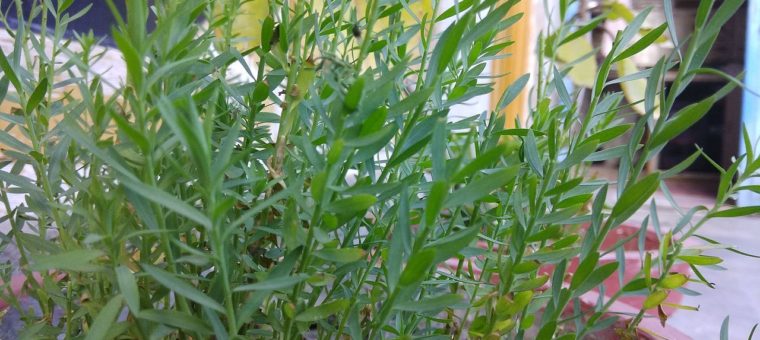
Guild Gardens: Flax and Japanese Indigo
When the weather turns warm, many of us abandon the studio and fiber arts to work on our gardens. This summer we’ll combine fiber and gardens with our Japanese Indigo project. At the April meeting, the guild will supply seeds to anyone who would like to try their green thumb by growing Japanese indigo. Then, in late summer, we’ll pool our first harvest and separate the indigo dye from the plant using a fermentation process. Later, around the first frost, we’ll collect and dry the remaining plant matter and if we have enough we can set up a composting vat, which is another way to separate the dye from plant matter. And by the end of the summer, we should have enough indigo to play with some of the various forms of indigo dyeing – and hopefully have a good supply of blue yarn this fall!
Japanese indigo is not hardy in this climate so you don’t have to worry about it taking over your garden (unlike woad). The seeds will need to be started indoors about three weeks before the last frost. The plant tends to spread so it’s best grown in a container, and the richest soil produces plants with a greater amount of indigo. The seeds from the plants can be collected and saved for next year’s crop.
If you would like a packet of Japanese indigo seeds, we’ll have a sign-up sheet at the January and February meetings, and in the studio – just to give us an idea of how many seeds we’ll need! We’ll also have complete growing instructions for everyone who receives seeds.
And don’t forget our ongoing flax project! We’ll be braking, scutching, and hackling last year’s crop of flax sometime in May, and seeds will be available at the studio and at the April meeting for another crop this year. What we’ve noticed is that every year some of the plots turn out great, others are not so great. So it really helps to have multiple flax plots in different areas so we can be sure that some of the flax will be turned into linen!
